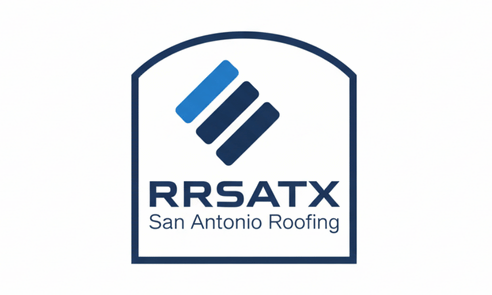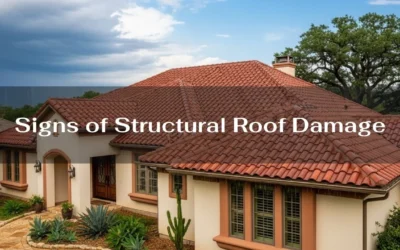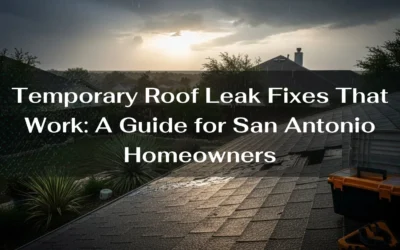If you’re a homeowner in San Antonio, Texas, you know how important it is to protect your home from the elements, especially when it comes to your roof. One critical but often overlooked component of your roofing system is roof flashing. Understanding roof flashing repair and why it matters can save you from costly repairs and keep your home safe and dry.
What Is Roof Flashing?
Roof flashing is a thin, corrosion-resistant material, usually made from galvanized steel, aluminum flashing, or copper, installed around vulnerable areas of your roof. These areas include where the roof meets a vertical surface like walls or chimneys, around vent pipes, skylights, valleys where two roof slopes meet, and roof edges. Its main job is to direct water away from these vulnerable spots to prevent water intrusion and damage.
Why Roof Flashing Is Essential in San Antonio
San Antonio’s climate can be tough on roofs. With hot summers, heavy rainstorms, and occasional severe weather events, your roof flashing plays a critical role in maintaining your roof’s integrity. Proper flashing installation creates a watertight seal that protects your roof structure from water infiltration, which can lead to mold growth, compromised structural integrity, and costly repairs.
Common Types of Roof Flashing
Understanding the types of roof flashing can help you recognize where repairs might be needed:
- Step Flashing: Installed where the roof meets a vertical wall, such as exterior walls or dormers. It helps direct water away from the joint.
- Valley Flashing: Placed in the valleys where two roof slopes intersect, channeling water safely down the roof.
- Drip Edge Flashing: Found along the roof’s edges, it directs water away from the fascia and into gutters, protecting these areas from water damage.
- Counter Flashing: Works with base flashing around chimneys or walls, providing an extra layer of protection.
- Vent Pipe Flashing: Seals around vent pipes where they penetrate the roof, preventing leaks.
Signs You Need Roof Flashing Repair
San Antonio homeowners should keep an eye out for these signs of damaged flashing:
- Water stains or leaks inside your home, especially near ceilings or walls adjacent to roof features.
- Loose flashing or flashing that appears rusted or corroded.
- Missing flashing or flashing that has pulled away from the roof.
- Damaged or cracked roofing cement around flashing areas.
Why Timely Roof Flashing Repair Matters
Ignoring damaged flashing can lead to water infiltration, which causes mold growth, rotting wood, and structural damage to your roof and home. In San Antonio’s warm and humid climate, mold growth can happen quickly, affecting indoor air quality and your family’s health. Additionally, water intrusion can compromise your roof’s structural integrity, leading to costly repairs or even roof replacement.
Proper flashing repair restores the watertight seal, protecting your roof’s longevity and your home’s overall health. It also helps maintain your home’s energy efficiency by preventing air leaks that can increase heating and cooling costs—a significant consideration given San Antonio’s hot summers.
The Roof Flashing Repair Process
Repairing roof flashing involves several important steps:
- Inspection: A professional roofing contractor will inspect your roof to identify damaged flashing and vulnerable areas.
- Removal of Damaged Flashing: Old or damaged flashing is carefully removed to avoid harming surrounding shingles or roofing material.
- Measuring and Cutting New Flashing: New flashing material is cut to size, ensuring it extends beyond the damaged area.
- Installation: The new flashing is installed with roofing nails, properly overlapping surrounding shingles and secured firmly.
- Sealing: Roofing cement is applied along flashing edges to create a watertight seal.
- Final Inspection: The repaired area is checked for proper installation and watertightness.
Why Hire Professional Roofers in San Antonio?
While minor repairs might be handled by handy homeowners, proper roof flashing repair requires expertise and experience. Professional roofing contractors in San Antonio understand local building codes, climate challenges, and proper flashing installation techniques. They use corrosion-resistant flashing material suitable for our environment and ensure the entire roofing system works together to protect your home.
Maintaining Your Roof Flashing
To keep your roof flashing in good shape:
- Schedule routine inspections, especially after severe weather events.
- Keep gutters clean to prevent water backup.
- Trim overhanging tree branches to avoid damage.
- Address any flashing issues promptly to avoid costly repairs.
Conclusion
For San Antonio homeowners, roof flashing repair is not just a minor fix—it’s an essential part of maintaining a healthy roof and protecting your home from water damage, mold growth, and structural issues. Proper installation and timely repair of roof flashing ensure a watertight seal that preserves your roof’s integrity and your family’s comfort. When you notice signs of damaged flashing or after a storm, don’t wait—contact a professional roofing contractor to safeguard your home.
Protect your investment and enjoy peace of mind knowing your roof’s flashing is working hard to keep San Antonio’s unpredictable weather at bay.












